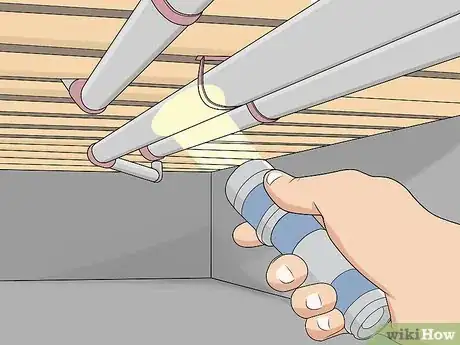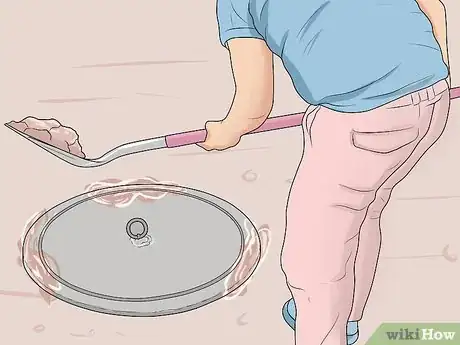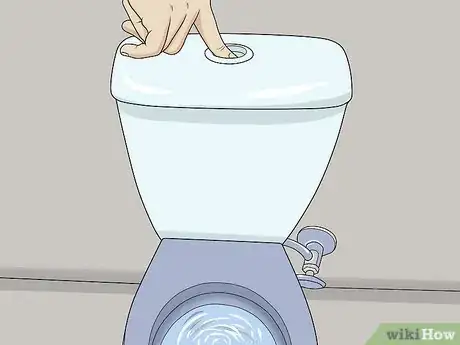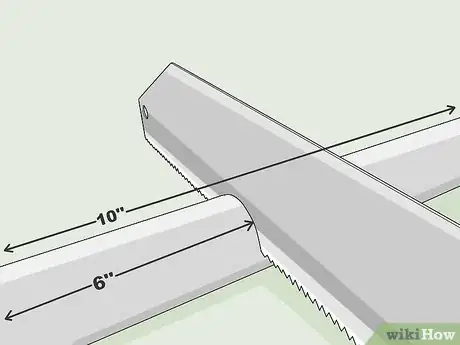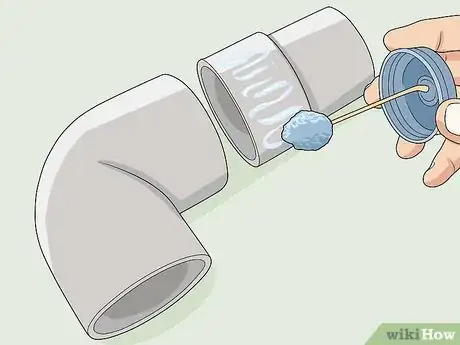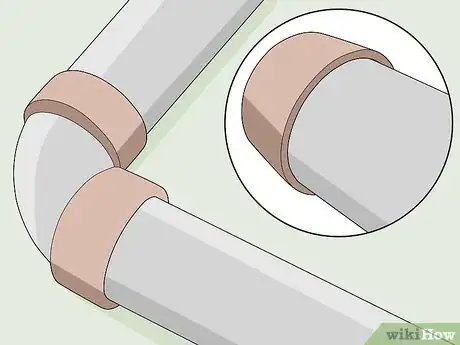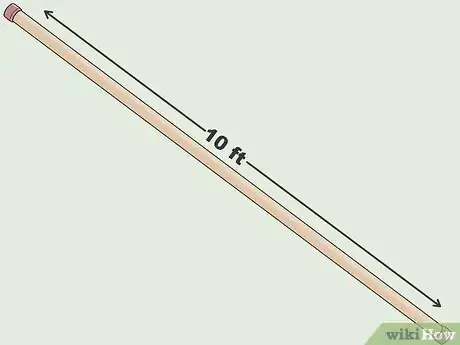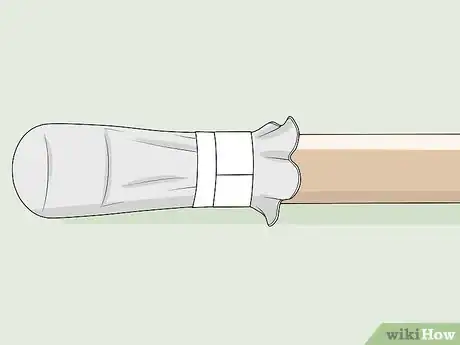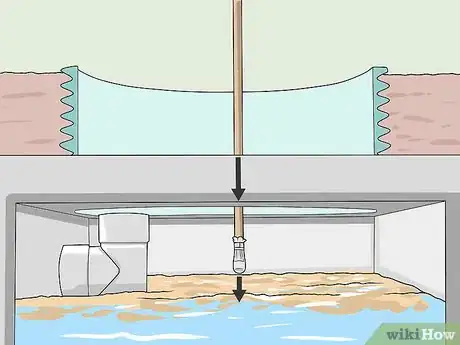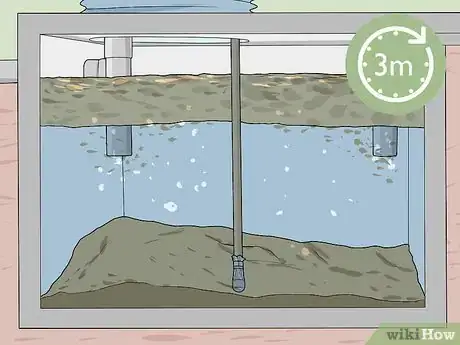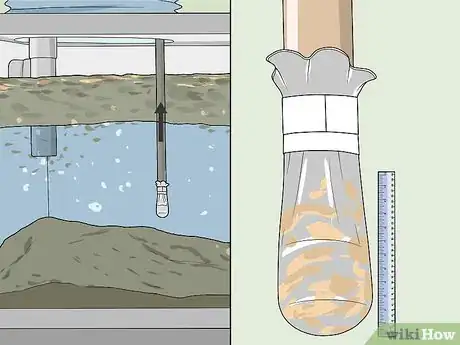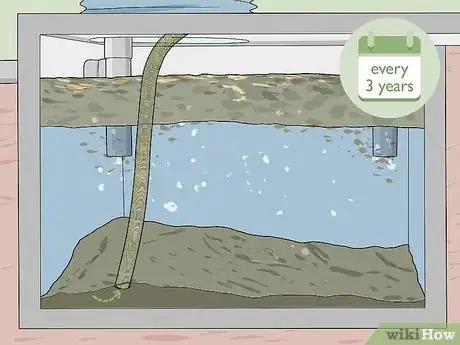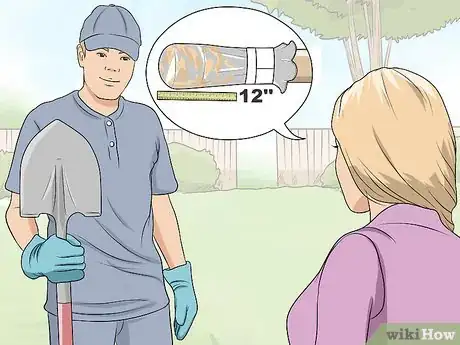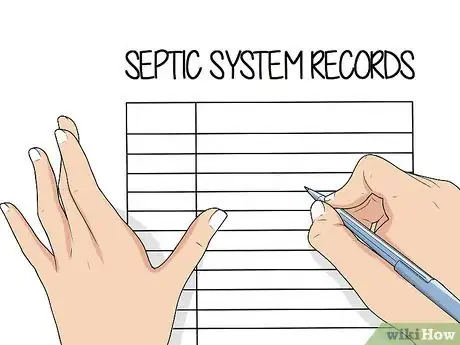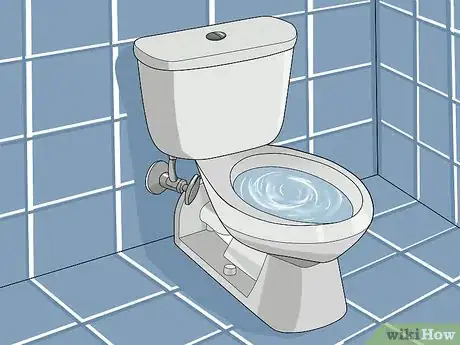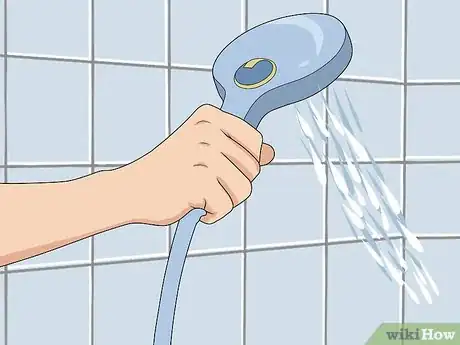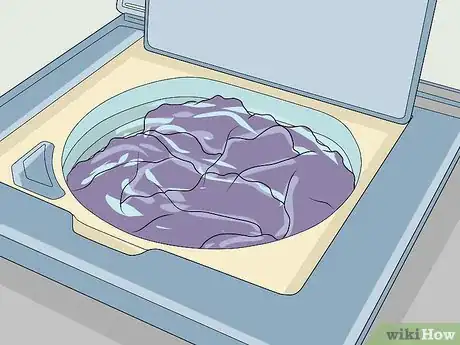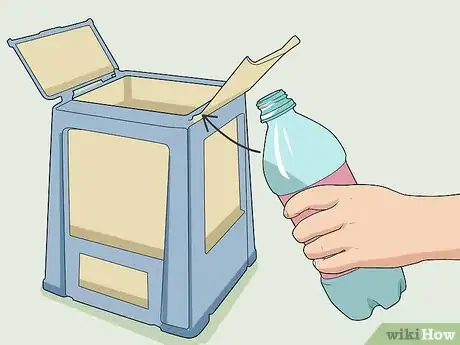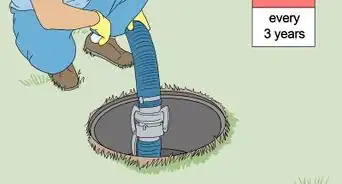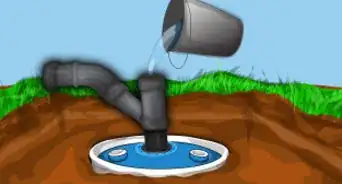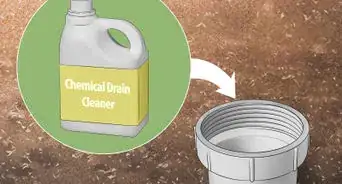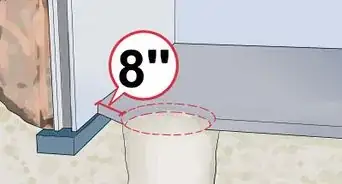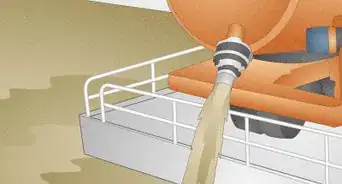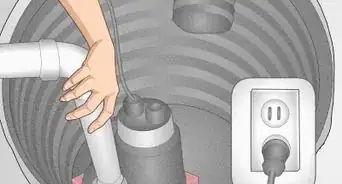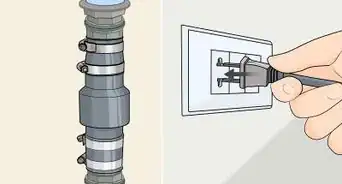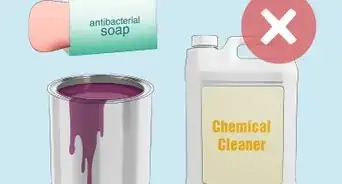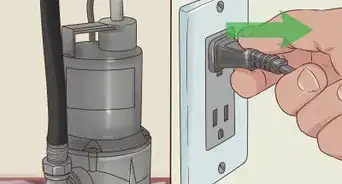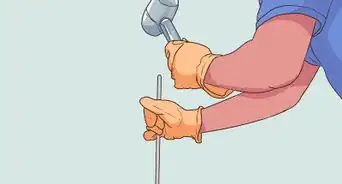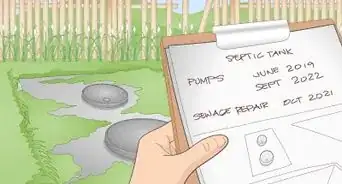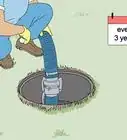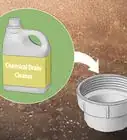This article was co-authored by David Balkan. David Balkan is a Professional Plumber, CEO of Balkan Sewer and Water Main Service, and President of Balkan Sewer and Drain Cleaning. As a hands-on owner of these companies for over 40 years, David is knowledgeable about water service lines, sewers, and drain line issues. David is a Committee Chairman of the Master Plumbers Council and has sat on the Executive Committee of the Sub Surface Plumbers Association of New York for over 30 years. His knowledge and solution-oriented approach contributed to Balkan Sewer and Water Main Service being the largest and most trusted service in New York City and the recipient of the 2017 Angie’s List Super Service Award.
There are 8 references cited in this article, which can be found at the bottom of the page.
wikiHow marks an article as reader-approved once it receives enough positive feedback. This article received 38 testimonials and 89% of readers who voted found it helpful, earning it our reader-approved status.
This article has been viewed 528,379 times.
In order for your home's plumbing system to keep performing at its best, you need to care for your septic system. Fortunately, it's relatively easy to do. Locate, inspect, and make sure your septic tank is functioning by running water through it. Check your sludge and scum levels to make sure they don't get too high. Every few years, you need to have your system pumped by a professional. You can also use good habits to help maintain your septic system and prolong its lifespan.
Steps
Inspecting Your Septic System
-
1Follow your sewer pipe to locate your septic tank. Look in your basement or crawlspace for your sewer pipe. Follow the direction of the sewer pipe to identify the general location of your septic system. Go back outside and look around in that area to identify your septic tank.[1]
- Find a pipe that you know is a drain, such as a pipe coming from a toilet or a sink, and follow it until it connects to a larger pipe. The larger pipe is your sewer pipe.
- Once you locate your septic tank, draw a map of its location so you can find it in the future.
- Typically, septic tanks are at least 15 ft (4.6 m) away from your home.[2]
-
2Remove the dirt covering the top of your tank. If your tank is buried underground, you'll need to expose the top of it so you can inspect and access it. Use a shovel to remove enough dirt to allow you to see the top of the tank and the manhole.[3]
- Be careful not to drive the blade of the shovel into the septic system when you dig.
- Uncover the tank just enough to inspect it so you can bury it again when you're done so it isn't visible.
Advertisement -
3Check for any cracks or damage to the septic tank. Whenever you expose the top of the tank, look over the surface of it. Look for rust, dents, cracks, or any other signs of damage to the tank. Serious damage will require an inspection and possibly repairs from a septic tank specialist.[4]
- Lots of corrosion and rust could mean it's time for you to replace your tank.
-
4Flush a toilet to make sure the tank is working properly. A simple way to test if your plumbing is working correctly and traveling all the way to the septic tank is to check the connections by running water through them. Stand near the tank, have someone flush a toilet, and listen for the water traveling to the tank.[5]
- If you see water bubbling through the ground or a crack in the system, your tank is in need of a repair from a septic tank specialist.
Tip: If you don't have another person to flush a toilet while you stand near the tank, turn on a faucet then head outside to the tank to make sure the water is reaching the tank properly.
Checking the Scum Level
-
1Cut 6 inches (15 cm) off of a 10 ft (3.0 m) PVC pipe. In order to measure the scum level in your septic system, you need to create a measuring stick out of PVC pipe. Use a saw or a pipe cutter to remove a small section from the larger pipe.[6]
- PVC pipe is relatively cheap and can be found at home improvement stores and online.
- Use sandpaper to smooth the edges of the cut pipe if necessary.
- Cut the pipe evenly to form a straight edge that will fit into an elbow joint.
-
2Glue the smaller segment to the larger pipe with an elbow joint. Take a PVC elbow joint and insert the smaller section into it. Apply glue to the pipe and joint to seal them together. Then, insert the larger pipe into the joint and apply glue to connect them.[7]
- You can find elbow joints that will fit your PVC pipes at hardware or home improvement stores.
- Use superglue and use enough to create a tight seal.
-
3Place plastic caps on both ends of the pipe. Use plastic caps designed to fit over PVC pipes and seal both ends of the “L” shaped pipe with them. They should snap securely into place to create a seal.[8]
- You can find plastic caps for PVC pipes at hardware and home improvement stores, or online.
-
4Insert the pipe into the septic system until it contacts the scum. You need to measure 2 levels to find the depth of the scum in your tank. Insert the short end of the “L” shaped pipe into the manhole of your tank until it makes contact with the top of the liquid in the tank with the long side sticking straight up. This is the top of the scum layer.[9]
- Allow the pipe to float on the top surface for an accurate measurement.
Tip: Rest the pipe against the opening of the manhole so it doesn't move around.
-
5Use a marker to mark the pipe at the top of the manhole. To take your first measurement, mark the pipe where it's even with the top of the manhole as a reference point. The pipe should be floating on top of the scum layer.[10]
- Make sure the line that you mark is straight and even.
- Use a black marker so it's easier to see against the white PVC pipe.
-
6Push the pipe through the scum then mark it again. After you've taken your measurement of the top layer of the scum, push the pipe down through the scum until it contacts the bottom of the dense layer of scum and reaches the wastewater layer. Then mark the pipe where it's even with the top of the manhole.[11]
- Keep the pipe still while you hold it against the bottom of the tank so it doesn't move when you mark it.
- The wastewater layer will have much less resistance and will tell you that you've reached the bottom of the scum layer.
-
7Measure the space between the marks to find the scum depth. Pull the pipe out of the septic tank and set it down. Use a ruler or tape measure to measure the space between the 2 marks. This is the depth of the scum in your tank. If the scum layer is within 6 inches (15 cm) of the bottom of the outlet baffle, or the pipe you can see in the opening of the manhole, your tank needs to be pumped.[12]
- Write down your measurements so you can reference them later and provide them to a septic tank specialist if necessary.
Measuring the Sludge Layer
-
1Use a 10 ft (3.0 m) PVC pipe with caps on both ends. To make a pipe that you can use to measure the sludge layer in your tank, use a clean PVC pipe. Place plastic caps on both ends so the pipe is airtight.[13]
- You can find PVC pipes and plastic caps at hardware stores and online.
- Make sure the plastic caps snap into place securely.
-
2Wrap a white towel around 1 end of the pipe. You need a white cloth or towel to use to measure your sludge level so you can easily see the stain marking that the sludge will leave. Wrap the towel around 1 end of the pipe and then wrap tape around it so it's tight and secure.[14]
- You can use any type of tape, but be sure to use enough to secure the cloth to the pipe.
-
3Insert the pipe all the way into the septic tank. If you recently measured the scum layer, slide the pipe through the hole in the scum. Push the pipe all the way to the bottom of the tank and hold it in place.[15]
- It's important that you hold the pipe still to take an accurate measurement.
-
4Allow the pipe to sit for 3 minutes. Keep the pipe still while the sludge layer resettles and stains the cloth at the end of the pipe. Wait at least 3 minutes to allow the sludge to effectively stain the cloth.[16]
Tip: Set a timer so you can focus on keeping the pipe still.
-
5Remove the pipe and measure the stain. After 3 minutes, slowly pull the pipe out and set it down. Use a ruler or tape measure to measure the stain on the towel to find the depth of your sludge layer. If the sludge layer is within 12 inches (30 cm) of the outlet baffle, you need to pump your tank.[17]
- Write down your measurements so you can keep track of them.
Pumping Your Septic System
-
1Pump your septic system every 3 years. The septic system of the average household should be pumped every few years to keep the system functioning properly. If your sludge or scum levels get too high, you may need to have your tank pumped sooner.[18]
- If you have an alternative system with electrical float switches or mechanical components, have your tank inspected annually.
- If your sludge or scum levels are too high, have your system pumped as soon as you can.
-
2Contact a septic tank specialist to pump your tank. Pumping a septic system properly requires a certified septic tank specialist who will have the proper equipment and training. Go online to look for qualified septic tank professionals near you.[19]
- Schedule an appointment for a time that you'll be home so you can watch them pump your tank to make sure it's done correctly.
Tip: Check online reviews of the company before you hire them so you can be sure you choose high-quality professionals.
-
3Provide any measurements that you've taken to the specialist. If you measured your sludge and scum levels yourself, give your measurements to the septic tank professional. They could help them when they pump the septic system.[20]
- You can also compare your measurements to theirs to make sure they're being honest.
-
4Keep records of any work performed on your septic system. Anytime you have a professional work on or pump your septic system, keep the records in a safe place. They can come in handy later if you need to see what work was done or if your septic tank is damaged.[21]
- Keep your records in a file cabinet so you know where they are.
Keeping Your Septic System Healthy
-
1Install high-efficiency toilets to reduce water use. Toilets can account for up to 30 percent of your household water usage. Older toilets use much more water to function and the extra water winds its way into your septic system, causing wear and tear. Replace your toilets with high-efficiency toilets to increase the lifespan of your septic tank.[22]
- Have a certified plumber install your toilet so it's done correctly.
-
2Use showerheads that conserve water. High-efficiency showerheads and flow restrictors will help reduce the amount of water you use in the shower. The reduction of water volume entering the tank will keep your septic system healthier for longer.[23]
- Some regions will provide low-flow showerheads to you for free. Contact your local government or go online to see if there's a program near you.
-
3Select the proper load size on your washing machine. Washing multiple small loads of laundry in your washing machine wastes both water and energy. Setting your machine to the appropriate load size can reduce water waste.[24]
Tip: If your machine doesn't allow you to choose the load size, run full loads of laundry whenever you wash.
-
4Dispose of grease in a container in the garbage. Grease can seriously clog up your pipes and add to the scum levels in your septic system. Don't pour grease down the drain. Instead, pour it into a separate container and throw it away in the trash.[25] [26]
- Use a container you can seal so the grease doesn't spill.
- If you can, use vegetable-based soaps at home instead of animal fat-based soaps.[27]
Expert Q&A
-
QuestionWhat will ruin a septic system?
 David BalkanDavid Balkan is a Professional Plumber, CEO of Balkan Sewer and Water Main Service, and President of Balkan Sewer and Drain Cleaning. As a hands-on owner of these companies for over 40 years, David is knowledgeable about water service lines, sewers, and drain line issues. David is a Committee Chairman of the Master Plumbers Council and has sat on the Executive Committee of the Sub Surface Plumbers Association of New York for over 30 years. His knowledge and solution-oriented approach contributed to Balkan Sewer and Water Main Service being the largest and most trusted service in New York City and the recipient of the 2017 Angie’s List Super Service Award.
David BalkanDavid Balkan is a Professional Plumber, CEO of Balkan Sewer and Water Main Service, and President of Balkan Sewer and Drain Cleaning. As a hands-on owner of these companies for over 40 years, David is knowledgeable about water service lines, sewers, and drain line issues. David is a Committee Chairman of the Master Plumbers Council and has sat on the Executive Committee of the Sub Surface Plumbers Association of New York for over 30 years. His knowledge and solution-oriented approach contributed to Balkan Sewer and Water Main Service being the largest and most trusted service in New York City and the recipient of the 2017 Angie’s List Super Service Award.
Professional Plumber & CEO of Balkan Sewer & Water Main Grease will definitely hurt your septic system. It'll coat both the pipes and the inside of your septic tank, which prevents your tank from properly leaching water into the ground.
Grease will definitely hurt your septic system. It'll coat both the pipes and the inside of your septic tank, which prevents your tank from properly leaching water into the ground. -
QuestionWhat soap is safe for septic systems?
 David BalkanDavid Balkan is a Professional Plumber, CEO of Balkan Sewer and Water Main Service, and President of Balkan Sewer and Drain Cleaning. As a hands-on owner of these companies for over 40 years, David is knowledgeable about water service lines, sewers, and drain line issues. David is a Committee Chairman of the Master Plumbers Council and has sat on the Executive Committee of the Sub Surface Plumbers Association of New York for over 30 years. His knowledge and solution-oriented approach contributed to Balkan Sewer and Water Main Service being the largest and most trusted service in New York City and the recipient of the 2017 Angie’s List Super Service Award.
David BalkanDavid Balkan is a Professional Plumber, CEO of Balkan Sewer and Water Main Service, and President of Balkan Sewer and Drain Cleaning. As a hands-on owner of these companies for over 40 years, David is knowledgeable about water service lines, sewers, and drain line issues. David is a Committee Chairman of the Master Plumbers Council and has sat on the Executive Committee of the Sub Surface Plumbers Association of New York for over 30 years. His knowledge and solution-oriented approach contributed to Balkan Sewer and Water Main Service being the largest and most trusted service in New York City and the recipient of the 2017 Angie’s List Super Service Award.
Professional Plumber & CEO of Balkan Sewer & Water Main Vegetable-based soaps are the best option for keeping your septic system working well. Opt for vegetable soaps over animal-based soaps if you can.
Vegetable-based soaps are the best option for keeping your septic system working well. Opt for vegetable soaps over animal-based soaps if you can. -
QuestionIs using vinegar for washing clothes a problem for septic tanks?
 Community AnswerNo, vinegar won't hurt your septic tank.
Community AnswerNo, vinegar won't hurt your septic tank.
Things You'll Need
Checking the Scum Level
- A 10 ft (3.0 m) PVC pipe
- Elbow joint
- Plastic caps
- Glue
- Marker
- Superglue
- Ruler or tape measure
Measuring the Sludge Layer
- A 10 feet (3.0 m) PVC pipe
- Tape
- White towel or cloth
- Ruler or tape measure
References
- ↑ http://www.nesc.wvu.edu/pdf/ww/septic/pl_fall04.pdf
- ↑ David Balkan. Professional Plumber & CEO of Balkan Sewer & Water Main. Expert Interview. 29 April 2021.
- ↑ http://www.nesc.wvu.edu/pdf/ww/septic/pl_fall04.pdf
- ↑ https://www.nachi.org/inspecting-septic-systems.htm
- ↑ https://www3.epa.gov/npdes/pubs/homeowner_guide_long.pdf
- ↑ https://www.co.thurston.wa.us/health/ehoss/pdf/StickTestBrochure.pdf
- ↑ https://www.co.thurston.wa.us/health/ehoss/pdf/StickTestBrochure.pdf
- ↑ https://www.co.thurston.wa.us/health/ehoss/pdf/StickTestBrochure.pdf
- ↑ https://www.doh.wa.gov/Portals/1/Documents/Pubs/337-122.pdf
- ↑ https://www.doh.wa.gov/Portals/1/Documents/Pubs/337-122.pdf
- ↑ https://www.doh.wa.gov/Portals/1/Documents/Pubs/337-122.pdf
- ↑ https://www.epa.gov/septic/how-care-your-septic-system
- ↑ https://www.co.thurston.wa.us/health/ehoss/pdf/StickTestBrochure.pdf
- ↑ https://www.co.thurston.wa.us/health/ehoss/pdf/StickTestBrochure.pdf
- ↑ https://www.doh.wa.gov/Portals/1/Documents/Pubs/337-122.pdf
- ↑ https://www.doh.wa.gov/Portals/1/Documents/Pubs/337-122.pdf
- ↑ https://www.co.thurston.wa.us/health/ehoss/pdf/StickTestBrochure.pdf
- ↑ https://www.epa.gov/septic/how-care-your-septic-system
- ↑ https://www.epa.gov/septic/how-care-your-septic-system
- ↑ https://www.doh.wa.gov/Portals/1/Documents/Pubs/337-122.pdf
- ↑ https://www.epa.gov/septic/how-care-your-septic-system
- ↑ https://www.epa.gov/septic/how-care-your-septic-system
- ↑ https://www.epa.gov/septic/how-care-your-septic-system
- ↑ https://www.epa.gov/septic/how-care-your-septic-system
- ↑ https://www.kingcounty.gov/depts/health/environmental-health/piping/onsite-sewage-systems/maintenance/dos-and-donts.aspx
- ↑ David Balkan. Professional Plumber & CEO of Balkan Sewer & Water Main. Expert Interview. 29 April 2021.
- ↑ David Balkan. Professional Plumber & CEO of Balkan Sewer & Water Main. Expert Interview. 29 April 2021.
About This Article
To care for a septic system, spread out your laundry over 2 or more days to give your septic tank time to recover in between washes. If you have a garbage disposal, use it sparingly so that you don’t clog the drain fields. Every few months, flush 1 liter of spoiled buttermilk down the toilet to add healthy bacteria and break up the waste in the tank. Additionally, have the tank pumped by professionals every 2 to 3 years for a household of 4, and every 4 to 5 years for a household of 2, in order to prevent the buildup of sludge. For more advice, including how to take care of your septic system by using septic safe-safe products, keep reading.
